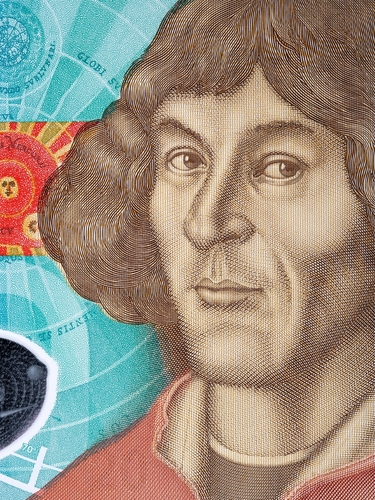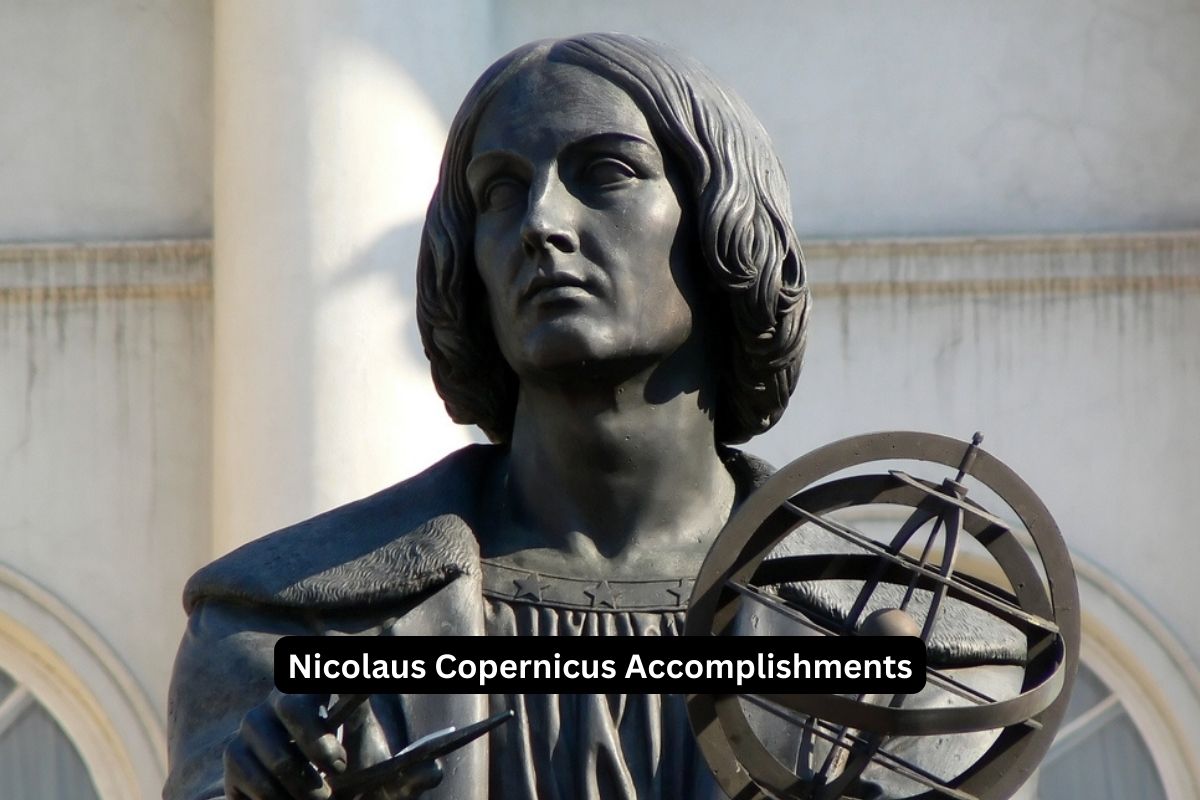Nicolaus Copernicus (1473-1543) was a Renaissance astronomer and mathematician whose revolutionary ideas and contributions reshaped our understanding of the universe.
His most significant accomplishment was proposing the heliocentric model, which placed the Sun at the center of the solar system with the planets, including Earth, orbiting around it.
This departure from the prevailing geocentric view challenged centuries-old beliefs and paved the way for the Copernican Revolution.
Copernicus’s work, presented in his book “De revolutionibus orbium coelestium,” influenced future astronomers, sparked a paradigm shift in scientific thinking, and contributed to the development of modern scientific methodology.
His observations, calculations, and theories laid the foundation for a more accurate and comprehensive understanding of the cosmos.
Accomplishments of Nicolaus Copernicus
1. Proposed the heliocentric model of the solar system
Copernicus’s most significant achievement was his proposal of a heliocentric model, which challenged the prevailing geocentric view that positioned the Earth at the center of the universe.
Also Read: Facts About Nicolaus Copernicus
In his model, Copernicus argued that the Sun is at the center, with the Earth and other planets orbiting around it. This revolutionary idea placed the Sun, rather than the Earth, as the central body of the solar system.

2. Published the book “De revolutionibus orbium coelestium” on his heliocentric theory
Copernicus’s groundbreaking ideas were presented in his book “De revolutionibus orbium coelestium” (On the Revolutions of the Celestial Spheres), which was published in 1543, just before his death.
This work provided a comprehensive account of his heliocentric theory and mathematical calculations for planetary motion.
Also Read: Timeline of Nicolaus Copernicus
It included detailed explanations of the orbits and movements of the planets, as well as the Earth’s rotation. Despite facing criticism and controversy, the book laid the foundation for a new understanding of the universe.
3. Argued for the Earth’s rotation on its axis
Copernicus also proposed that the Earth rotates on its axis, thereby explaining the daily motion of the celestial sphere. This idea countered the prevailing belief that the Earth was stationary at the center of the universe.
By suggesting Earth’s rotation, Copernicus provided a more coherent explanation for the observed diurnal (daily) cycle of the Sun and stars. This notion of Earth’s rotation added further support to his heliocentric model and helped shape our understanding of planetary motion.
4. Developed a system for calculating and predicting planetary motions
Copernicus developed a systematic approach to calculate and predict the motions of the planets based on his heliocentric model. He proposed that the planets move in perfect circles around the Sun, with each planet having a unique distance and period of revolution.
Copernicus’s system incorporated intricate mathematical calculations, such as epicycles and deferents, to explain the observed retrograde motion of planets. His model provided a more accurate representation of planetary motions compared to the geocentric models that preceded it.
5. Eliminated the need for equants in explaining planetary motion
One of Copernicus’s important contributions was eliminating the need for equants in explaining the irregular motion of planets. Equants were hypothetical points introduced in the geocentric model to account for variations in planetary speed.
However, Copernicus’s heliocentric model, which used uniform circular motion, offered a simpler and more elegant explanation. By employing the concept of concentric circles for planetary orbits, Copernicus removed the need for equants and provided a more coherent understanding of planetary motion.

6. Recognized the vast distances to the stars
Copernicus recognized that the stars were enormously distant from the Earth, which was a significant departure from the prevailing belief that they were fixed points relatively close to our planet. Copernicus understood that the apparent motion of stars was due to the Earth’s rotation.
While he did not have precise measurements of stellar distances, his realization of their immense remoteness was a critical step toward later astronomers’ endeavors to gauge the vastness of the universe. Copernicus’s insight laid the groundwork for future studies on the distances and nature of stars.
7. Made various astronomical observations and measurements
Copernicus conducted a range of astronomical observations and measurements throughout his lifetime. While his observations were not as precise as those made by later astronomers, they formed the basis of his mathematical calculations and theories.
Copernicus observed the positions and movements of celestial bodies, such as the Sun, Moon, planets, and stars. These observations helped him refine his heliocentric model and develop a better understanding of the celestial motions.
8. Influenced future astronomers like Galileo Galilei and Johannes Kepler
Copernicus’s work had a profound influence on subsequent generations of astronomers. His ideas inspired scientists such as Galileo Galilei, who used the telescope to provide further evidence supporting the heliocentric model.
Johannes Kepler, another prominent astronomer, built upon Copernicus’s work and refined the heliocentric model by introducing the concept of elliptical planetary orbits. Copernicus’s ideas and discoveries laid the groundwork for further advancements in astronomy and paved the way for a new era of scientific thinking.
9. Marked a paradigm shift in scientific thinking
Copernicus’s heliocentric model marked a significant shift in scientific thinking and challenged long-held beliefs about the nature of the universe. The prevailing geocentric view, supported by the Catholic Church and prominent philosophers like Aristotle and Ptolemy, placed the Earth at the center of the cosmos.
Also Read: Ptolemy Facts
Copernicus’s revolutionary idea that the Earth orbited the Sun went against this established worldview. His heliocentric model introduced a new framework for understanding the solar system, sparked debates, and prompted a reevaluation of fundamental assumptions about the cosmos.
10. Contributed to the development of scientific methodology
Copernicus’s approach to scientific inquiry set a precedent for modern scientific methodology. His work emphasized the importance of observation, measurement, and mathematical modeling in explaining natural phenomena.
Copernicus combined careful observations of celestial bodies with mathematical calculations to develop his heliocentric model.
His approach demonstrated the power of using empirical evidence and mathematics to understand and explain the workings of the universe. Copernicus’s work laid the foundation for the scientific revolution and shaped the way scientists approach research and discovery.
